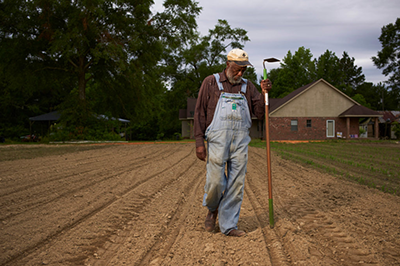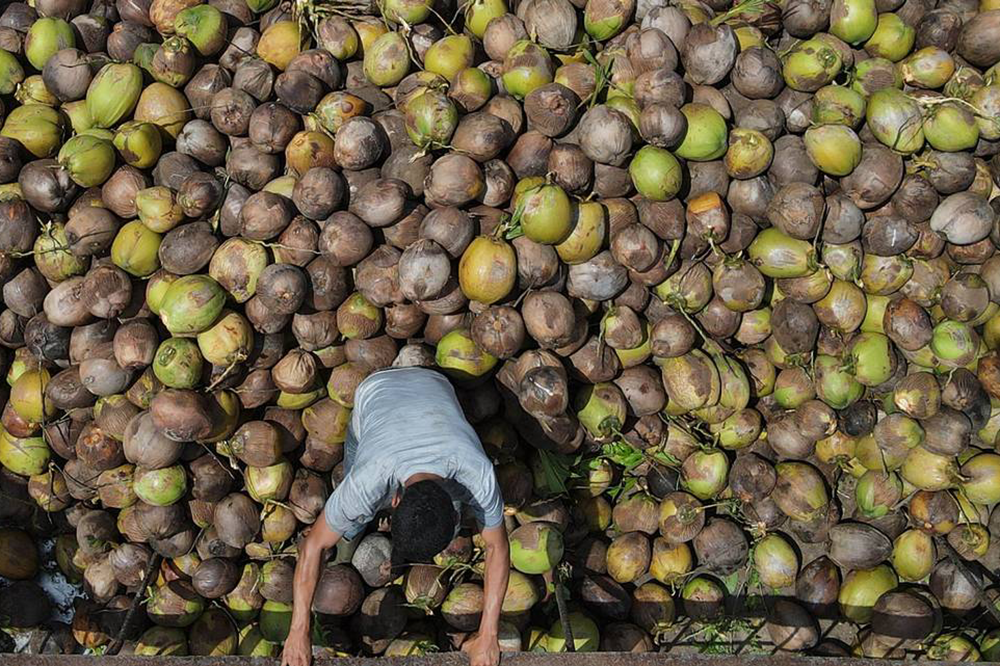
This month, in a historic step to redress racism, the US Department of Agriculture planned to begin issuing $4 billion in debt relief to minority farmers around the country. The move followed a long and ugly record of discrimination, including by the USDA itself.
Depressingly but not surprisingly, a group of white farmers has sued the department over the relief program, which was passed as part of the American Rescue Plan in March. These longtime beneficiaries of systemic racism now claim they are victims of reverse discrimination. On June 10, a US District Court issued a temporary restraining order on the USDA’s plan while it decided if the department’s program would discriminate against white farmers. A judge in Florida also ruled against the program on June 24, throwing the future of the aid further into doubt.
More shocking, though, has been the reaction from banks. Three of the country’s biggest banking trade groups are fighting to stop the debt relief. In a letter to Secretary of Agriculture Tom Vilsack, they issued a barely veiled threat to withhold credit from farmers of color if the USDA moved ahead with the initiative.
The three trade groups — the American Bankers Association, the Independent Community Bankers of America, and the National Rural Lenders Association — collectively represent a huge swath of American financial institutions, including the very ones that spent much of the 20th century denying home and business loans to people of color. Their attack on an effort to correct the effects of their actions shows how acceptable blatant racism remains in America’s most powerful institutions.
It also shows that ending financial discrimination against people of color will take more than a new federal program. We need strategies that enable people of color to take control of their economic fates.
A reparation for black farmers
For years, financial institutions have used discriminatory practices to withhold credit from nonwhite farmers. The USDA — which plays a central role in farming through loans, grants, insurance, technical help, and other services — has also failed to help Black farms equally, as Vilsack recently acknowledged. As a result, they struggled and shrank as white-owned farms grew. Consider that in 1920, 14% of the nation’s farmers were Black. By 2017, fewer than 2% were.
There have been efforts to remedy these injustices. In 1999, Black farmers won a major civil-rights class-action lawsuit, Pigford v. Glickman, which alleged systemic race-based discrimination by the USDA.
But this victory was undermined by settlement terms that made it onerous for claimants to collect their due. For instance, about 60,000 otherwise legitimate claims were rejected for being filed late. And one rule demanded that claimants come up with “specifically identified, similarly situated white farmers” who had not faced discrimination — legal research that could take a whole law firm months to produce.
This supposed cure, in short, was just as racist as the disease.
Even today, agricultural policies disadvantage minority farmers of color. Take the $8.5 billion Trump-era farm subsidy known as the Market Facilitation Program. While about 10% of US farmers are people of color, more than 99.4% of those funds went to non-Hispanic white farmers.
Still, the battle to stop aid for nonwhite farmers continues. Some, hoping to stir controversy, have characterized the USDA debt-relief program as a form of reparations for slavery — even though the program is intended for “socially disadvantaged farmers” as a group. About 4% of American farmers are Hispanic, 3% are Native American, and 1% are Asian or Pacific Islander.
In the banking groups’ letter to Vilsack, they said that should debt relief move forward as planned, “the likely result will be less access to credit for those seeking USDA guaranteed loans in the future,” including socially disadvantaged farmers and ranchers.
That sounds like intimidation from an industry determined to uphold racist structures. The banks complain that if the USDA repays farmers’ loans early, it will deny them the chance to earn income from interest or by selling off the debt.
People of privilege pay off loans early every day without their banks complaining to the government and threatening to withhold future loans. But they aren’t the Black farmers whom financial institutions had hoped to keep their agriculture debt for the rest of their days.
If Black farmers and other farmers of color are to ever overcome the financial sector’s entrenched racism, they’ll need to forge their own financial institutions — specifically, member-owned financial cooperatives. These organizations offer the same services as traditional banks, but unlike banks, they are deeply invested in the financial well-being of their member-owners.
The administration’s debt-relief program is a welcome move. But the ultimate solution for marginalized farmers is to take the levers of finance into their own hands.
—Cornelius Blanding is Executive Director of the Federation of Southern Cooperatives/Land Assistance Fund and currently sits on NCBA CLUSA’s Board of Directors. This article appears on the Federation’s website and was also published in Business Insider.


